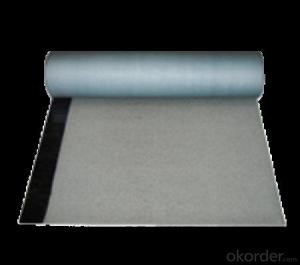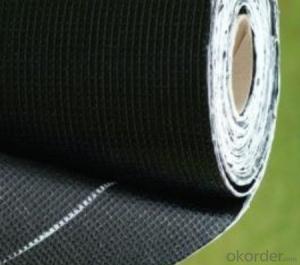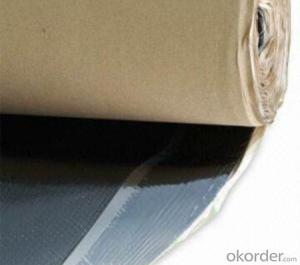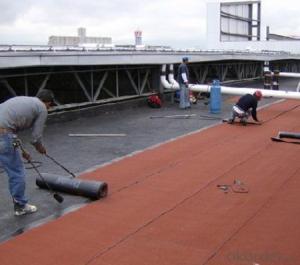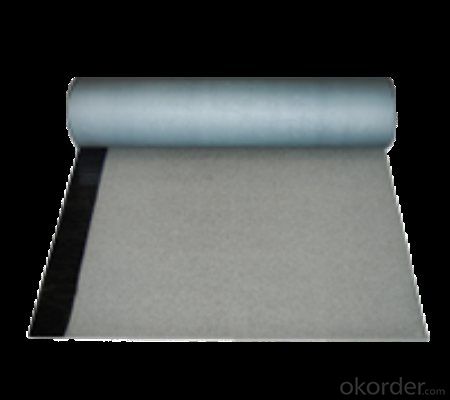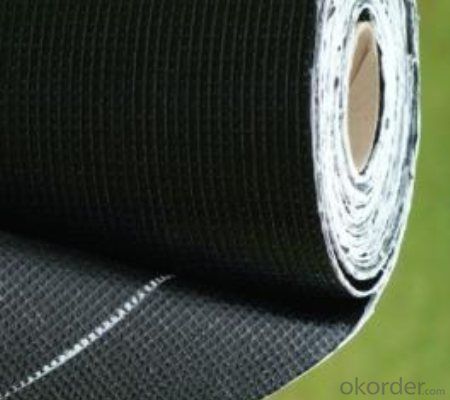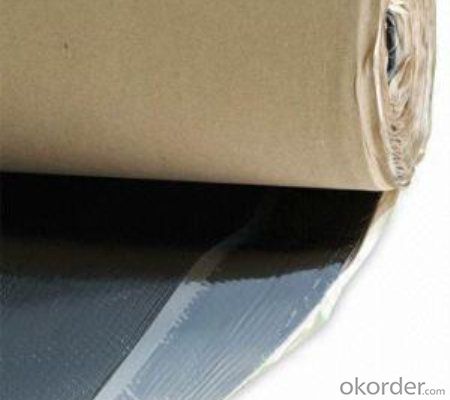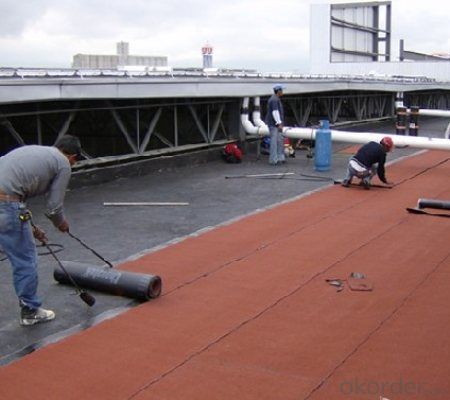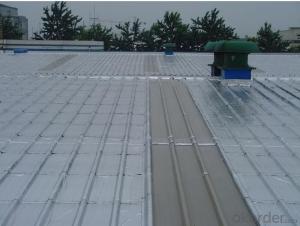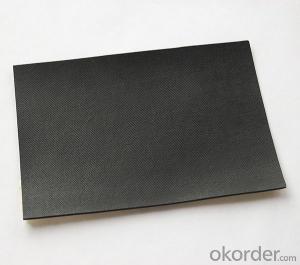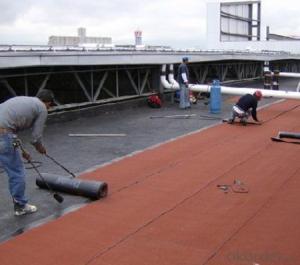APP Membrane Self-Adhesive Sticky for Waterproof System
- Loading Port:
- Qingdao
- Payment Terms:
- TT OR LC
- Min Order Qty:
- 8500 m²
- Supply Capability:
- 50000 m²/month
OKorder Service Pledge
OKorder Financial Service
You Might Also Like
APP MembraneSelf-Adhesive Sticky for Waterproof System
Description Of APP Membrane Self-Adhesive Sticky:
1. APP membrane is made from ternary ethylene-propylene rubber, which is for waterproofing of exposed and non-exposed applications.
2. APP membrane production adopts the world-advanced equipment of cold feeding extrusion and continuous vulcanization technology.
3. APP membrane is of high elasticity among high polymer waterproof materials and becomes a world-popular waterproofing material.
Main Features of APP Membrane Self-Adhesive Sticky:
1. Excellent physical and mechanical performance
2. High tearing resistance
3. Good deformation adaptability
4. High puncture resistance
5. High aging resistance
6. UV resistance
Specifications of APP Membrane Self-Adhesive Sticky:
Material | APP modified asphalt impregnated and coated tire base |
Size | 1.2m (width)*20m (length) or customized, weldable type 2.05m or 4m width |
Thick | 1.2mm, 1.5mm, 2.0mm |
Type | Self-Adhesive Sticky |
Pattern | Non-reinforced (homogeneous) |
Certificate | ISO9001/14001 |
Applications of APP Membrane Self-Adhesive Sticky:
1.Roofs, Basement, Toilets
2. Industrial and civil building waterproofing
3. Geosynthetic liner for swimming pool, channels, irrigation system
IMages of SBS Self-Adhesive Sticky Membrane:
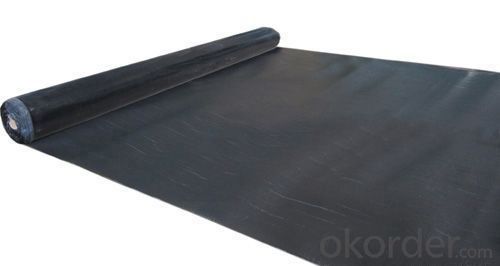
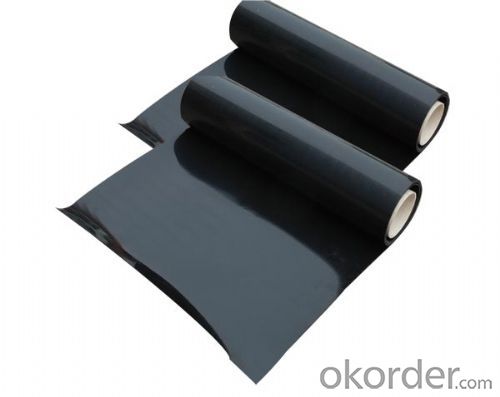
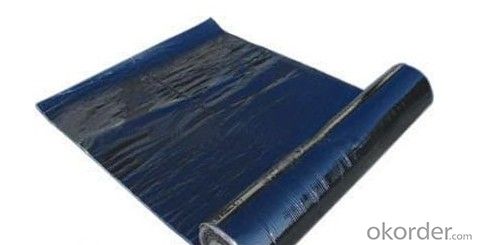
FAQ:
1. What are we supplying?
We are specialized in producing Colorful Asphalt Roof Shingle, SBS/APP modified bitumen waterproof membrane, Self adhesive bitumen waterproof membrane, PVC waterproofing membrane, EPDM rubber roofing membrane, Single Component Polyurethane Waterproof Coating, and Spray Polyurea Waterproof Coating
.
2. How Many years experience do we have?
We have been exported to more than 15 countries in the past 10 years.
3. How long do we usually reply your request?
We always reply our customer within 12 hours.
- Q: Can a waterproofing membrane be used on swimming pools?
- Yes, a waterproofing membrane can be used on swimming pools. In fact, it is a common and effective method for ensuring the pool remains watertight. Waterproofing membranes are typically made of materials such as PVC or rubber and are specifically designed to prevent water from seeping through the walls or floor of the pool. These membranes are applied as a thin layer or sheet over the pool's surfaces, creating a barrier that keeps water contained within the pool. This helps to minimize the risk of leaks and water damage, ensuring the longevity and functionality of the swimming pool.
- Q: Can a waterproofing membrane be used on concrete?
- Concrete can indeed benefit from the use of a waterproofing membrane. In fact, it is a popular technique employed to shield concrete structures from the harmful effects of water and moisture. A waterproofing membrane is a slender layer of material that is carefully placed on the concrete surface, serving as a barrier against water and moisture. This membrane can be crafted from a variety of materials such as bitumen, rubberized asphalt, polyurethane, or acrylic. It is typically administered in either liquid or sheet form, effectively attaching itself to the surface and forming a continuous impermeable coating. This coating, in turn, prevents water from infiltrating the concrete, thereby thwarting the possibility of deterioration, cracks, and other types of damage. Waterproofing membranes are extensively employed in a wide range of concrete applications, including basements, foundations, roofs, and any other structures that are exposed to water or moisture.
- Q: Can waterproofing membranes be used on swimming pool decks?
- Yes, waterproofing membranes can be used on swimming pool decks to protect them from water damage and leaks.
- Q: Can a waterproofing membrane be used for both interior and exterior applications?
- Yes, a waterproofing membrane can be used for both interior and exterior applications. Waterproofing membranes are designed to prevent water penetration and provide protection against moisture damage. They are commonly used in basements, bathrooms, and other interior spaces to prevent water intrusion and dampness. Additionally, waterproofing membranes can also be applied to the exterior of buildings to protect against rain, snow, and other external elements. By using a waterproofing membrane for both interior and exterior applications, you can ensure comprehensive protection against water damage and maintain the structural integrity of your property.
- Q: Can a waterproofing membrane be used on plywood surfaces?
- Yes, a waterproofing membrane can be used on plywood surfaces. The membrane acts as a barrier to prevent water penetration, protecting the plywood from moisture damage and extending its lifespan.
- Q: Can a waterproofing membrane be used on both horizontal and vertical surfaces of a structure?
- Both horizontal and vertical surfaces of a structure can benefit from the use of a waterproofing membrane. These membranes are specifically designed to create a barrier against moisture and are commonly utilized in various applications including roofs, basements, foundations, balconies, and walls. Due to their flexibility, they can easily adapt to different surface orientations, making them suitable for both horizontal and vertical installations. The flexibility of the membrane enables it to be applied and adhere effortlessly to different surfaces, effectively protecting against water infiltration and potential damage caused by moisture. Whether it is used on a roof or a wall, a waterproofing membrane is capable of preserving the integrity and longevity of a structure by preventing water penetration and potential water-related issues.
- Q: What is the typical installation process for a waterproofing membrane?
- The typical installation process for a waterproofing membrane involves several steps. First, the surface to be waterproofed is cleaned and prepared, ensuring it is free from debris, dirt, and any loose materials. Next, a primer is applied to enhance the adhesion of the membrane. The waterproofing membrane is then unrolled and carefully laid onto the surface, ensuring it is aligned correctly. It is commonly secured using adhesive or mechanical fasteners. Any overlaps or joints are properly sealed using a compatible sealant or tape. Finally, a protective layer, such as a geotextile fabric or drainage board, may be added to enhance the durability and performance of the waterproofing system. Overall, the installation process requires attention to detail and adherence to manufacturer guidelines to ensure a successful waterproofing solution.
- Q: Are there any specific maintenance requirements for a waterproofing membrane?
- Yes, there are specific maintenance requirements for a waterproofing membrane. Regular inspections should be conducted to check for any signs of damage or deterioration, such as cracks or leaks. Any debris or standing water should be promptly removed to prevent potential damage. Additionally, it is important to follow the manufacturer's guidelines for cleaning and maintenance, which may include periodic cleaning with mild detergents and avoiding the use of harsh chemicals or abrasive cleaning tools.
- Q: Can a waterproofing membrane be used on tile surfaces?
- Yes, a waterproofing membrane can be used on tile surfaces. A waterproofing membrane is a thin layer of material that is designed to prevent water or moisture from penetrating through to the underlying surface. It is commonly used in areas where water exposure is high, such as bathrooms, showers, or outdoor areas. When applied properly, a waterproofing membrane can create a barrier that protects the tile surface from water damage, preventing issues such as mold, mildew, or tile deterioration. It is important to ensure that the waterproofing membrane is compatible with the type of tile being used and that it is installed correctly to ensure maximum effectiveness.
- Q: Can a waterproofing membrane be used for tunnels or underground structures?
- Yes, a waterproofing membrane can be used for tunnels or underground structures. Waterproofing membranes are designed to prevent water infiltration and can be applied to the interior or exterior surfaces of tunnels or underground structures to protect them from water damage. These membranes create a barrier that prevents water from seeping into the structure, ensuring its longevity and structural integrity.
Send your message to us
APP Membrane Self-Adhesive Sticky for Waterproof System
- Loading Port:
- Qingdao
- Payment Terms:
- TT OR LC
- Min Order Qty:
- 8500 m²
- Supply Capability:
- 50000 m²/month
OKorder Service Pledge
OKorder Financial Service
Similar products
Hot products
Hot Searches
Related keywords
